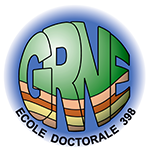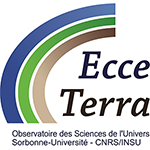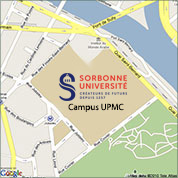Séminaire ISTeP - Louise Jeandet
(Univ Rennes)
Modélisation numérique des liens entre séismes et glissements de terrain au cours du cycle sismique : processus déclencheurs, distributions de tailles et implications géologiques
Interactions between tectonic processes and erosion have been poorly investigated at short time-scales (<1000 years). However, earthquakes can largely contribute to the erosion of mountain belts by triggering widespread landsliding. Moreover, recent studies have shown that such large erosional events could induce stress changes in the fault environment efficient enough to influence regional seismicity. In this thesis, this problematic is tackled through a numerical approach. Firstly, the development of a simple mechanical model accounting for the complexity and variability of natural hillslopes allowed to demonstrate the role of mechanical parameters (cohesion and friction), and of hillslope shape in the probability density function of landslide sizes. This model has been validated using natural cases of co-seismic landsliding. Secondly, the role of unstable hillslope height on large landslide probability has been demonstrated based on natural data, and the exponential distribution of this unstable height has been shown. Finally, the potential effect of a large erosional event on seismicity has been explored with a numerical model of seismic cycle, in which has been implemented temporal normal stress variations. The results emphasize the role of eroded sediment volume, but also of the export time of sediments away from the mountain belt. In landscape with high unstable hillslopes, large landslides are favored and in turn, could induce fast an important enough erosion to modify regional seismicity.
22/02/2019, Salle Fourcade à 12h30
Egalement dans la rubrique
- Séminaire ISTeP - Bellanger et Hermant
- Séminaire ISTeP - Guillaume Le Hir
- Séminaire ISTeP - Armel Menant
- Séminaire ISTeP - Nicolas Grasseau
- Séminaire ISTeP - Isabelle Moretti
- Séminaire ISTeP - Jean-Arthur Olive
- Séminaire ISTeP - Hugues Raimbourg
- Séminaire ISTeP - Baptiste Rousset
- Séminaire ISTeP - Lucile Bruhat
- Séminaire ISTeP - Alfonso Mucci
- Séminaire ISTeP - Anthony Jourdon
- Séminaire ISTeP - Marianne Conin
- Séminaire ISTeP - David Pyle
- Séminaire ISTeP - Vincent Strak
Chiffres clés (Mars 2025)
L'ISTeP comprend 131 membres dont :
Permanents (66)
- Professeurs : 17 (+2 PAST)
- Maîtres de conférence : 26
- Directeurs de recherche CNRS : 1
- Chargés de recherche CNRS : 1
- ITA : 19
Personnels non permanents (65)
- Collaborateurs bénévoles / émérites : 17
- Chaire de professeur junior : 1
- Enseignants-chercheurs contractuel : 2
- 1 MCF accueil en délégation
- ATER et Post-Docs : 9
- Doctorants : 32
- ITA-BIATSS : 3





